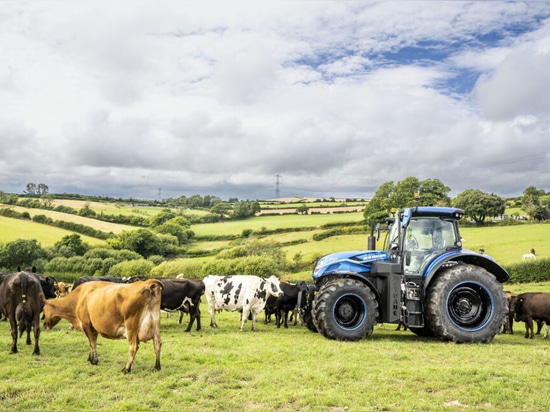
#Industry News
New Holland to establish methane-powered Irish farm
A lot of publicity has surrounded the methane-powered tractor launched by New Holland with the emphasis being on how a 100-cow herd may power a 170hp tractor for a year.
Yet, this is only the tip of the iceberg as far as the company is concerned for it is developing plans to fully exploit the methane content of slurry which it believes has a great future as an alternative energy source.
Investing in expertise
In March of this year, New Holland took a controlling interest in Bennamann, a Cornish based company that has established itself as a leader of methane capture and utilisation in the UK.
The immediate thought of many is to use it as an alternative fuel for powering tractors, an understandable reaction as it is alternative fuels for vehicles that are presently making the headlines.
Yet, New Holland has sat down and thought a great deal more about methane capture and concluded that if it is to be harvested for powering tractors, then why not use it elsewhere on the farm as there is very likely to be a surplus.
Showing the way
Bennamann has already established a working dairy in Cornwall which is almost fully self-sufficient in its energy needs. The missing piece of the jigsaw preventing 100% self reliance is a methane-powered generator, which it hopes to have in place by the summer.
In Ireland, there are well advanced plans to do the same this year, with the possibility of a second in 2024.
New Holland is remaining tight-lipped about the project’s details for the moment, but the company’s recently appointed methane specialist, Seamus Gallagher, is keen to get the idea out there.
Money from methane
Not only is it a question of recapturing the energy, but also reducing emissions. Seamus notes that the system of trading in carbon credits is coming down to small-scale industries rather than remaining the preserve of governments.
With the ever increasing average herd size, there may well be a surplus of methane available which could be utilised both within agriculture and other sectors, to help reduce the need to buy carbon credits from abroad on a national basis.
Looking further ahead, Seamus suggests that farming, and industry on a wider scale, will come to use carbon credits almost as an alternative currency, although it is to be asked as to whether businesses could cope with this added layer of complexity.
This may sound a little far fetched at present, but New Holland is obviously taking it seriously and is in the vanguard of creating an alternative energy landscape.
Promoting methane as an additional income stream for farmers certainly has its attractions.

